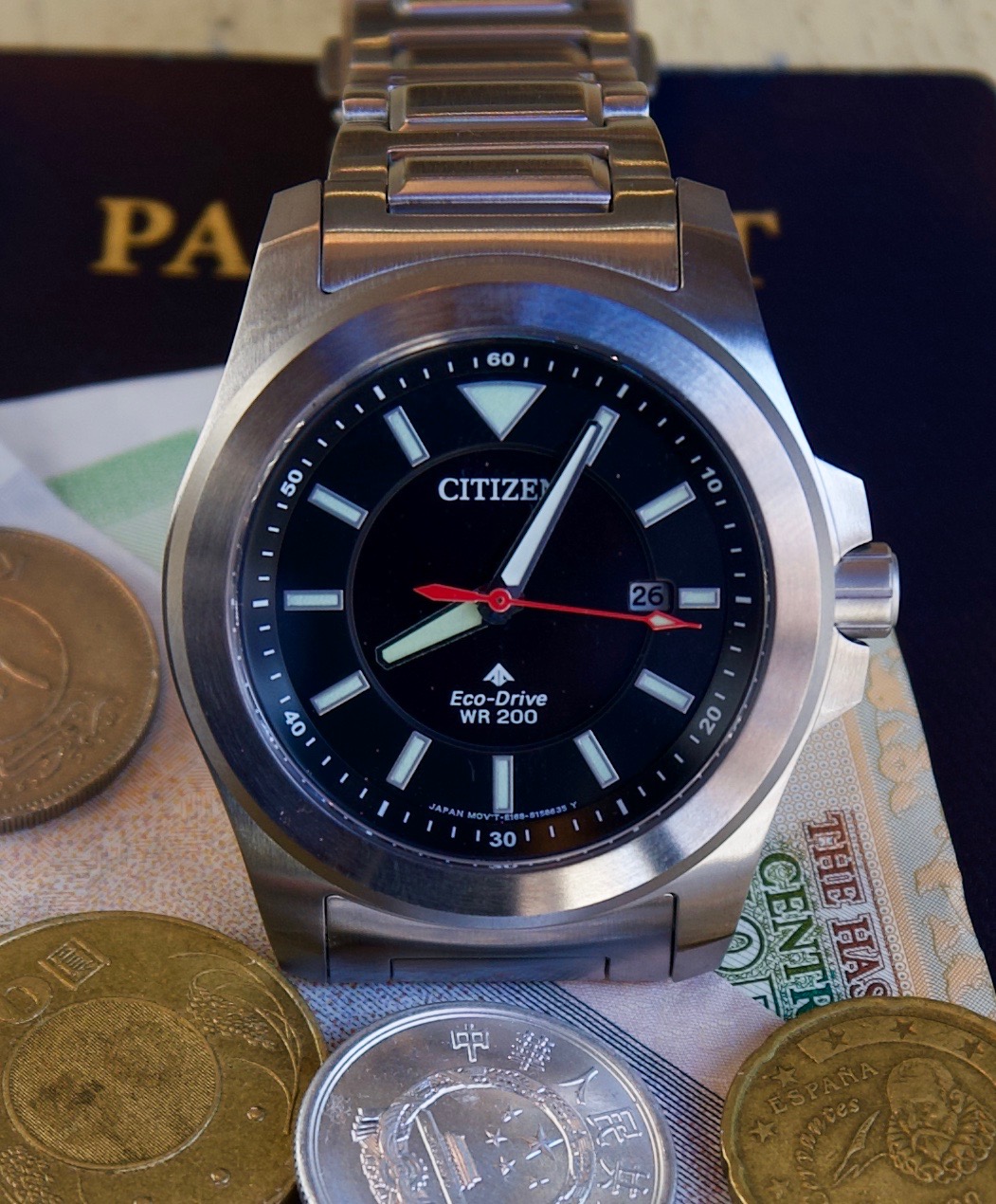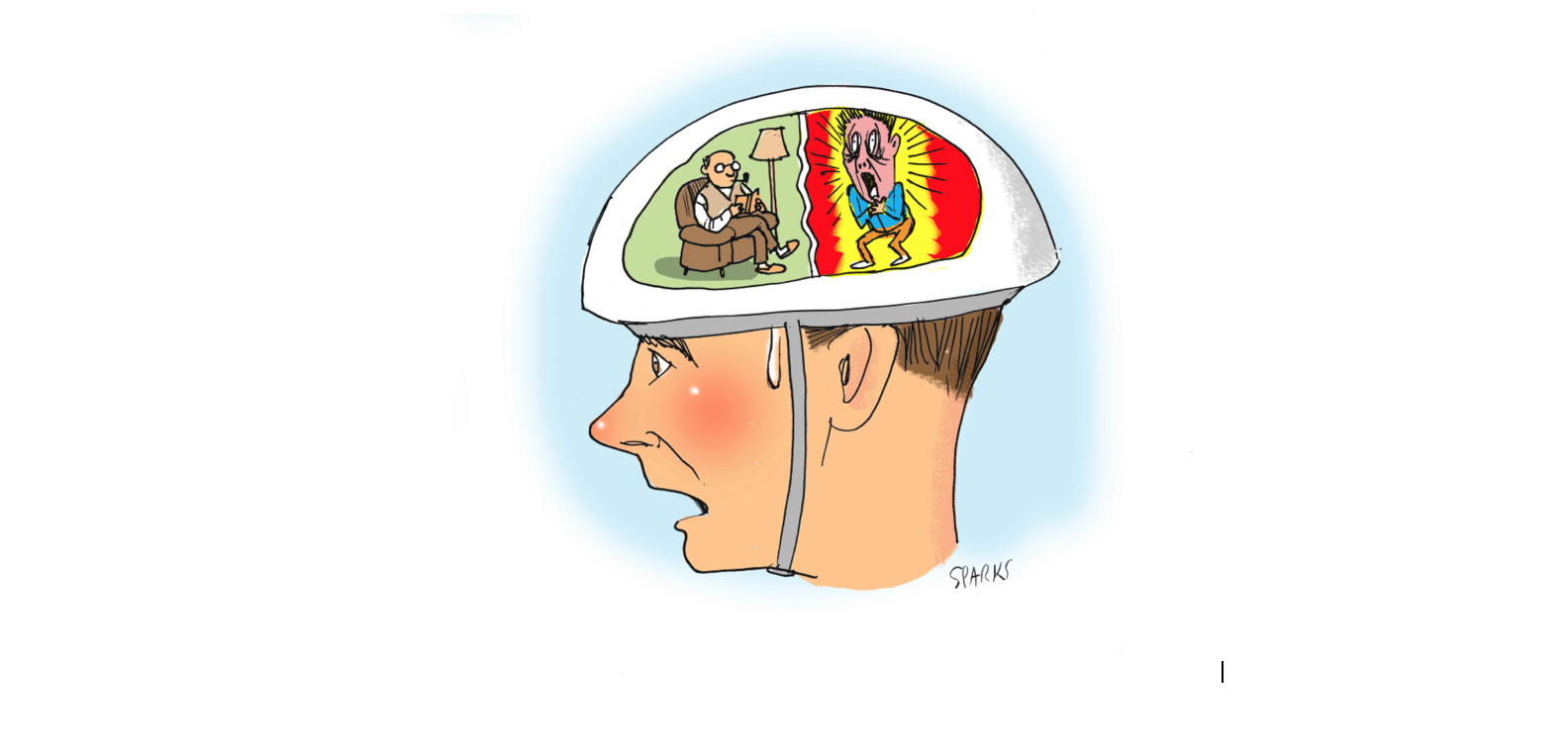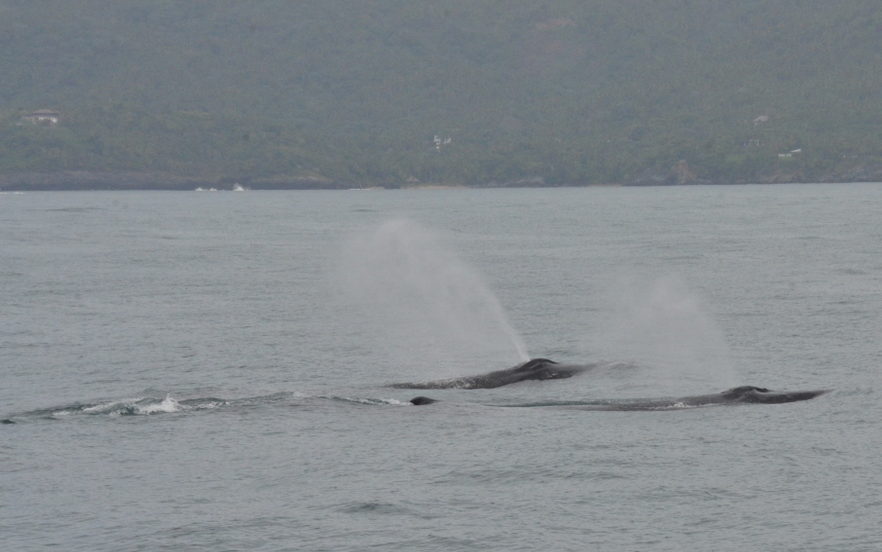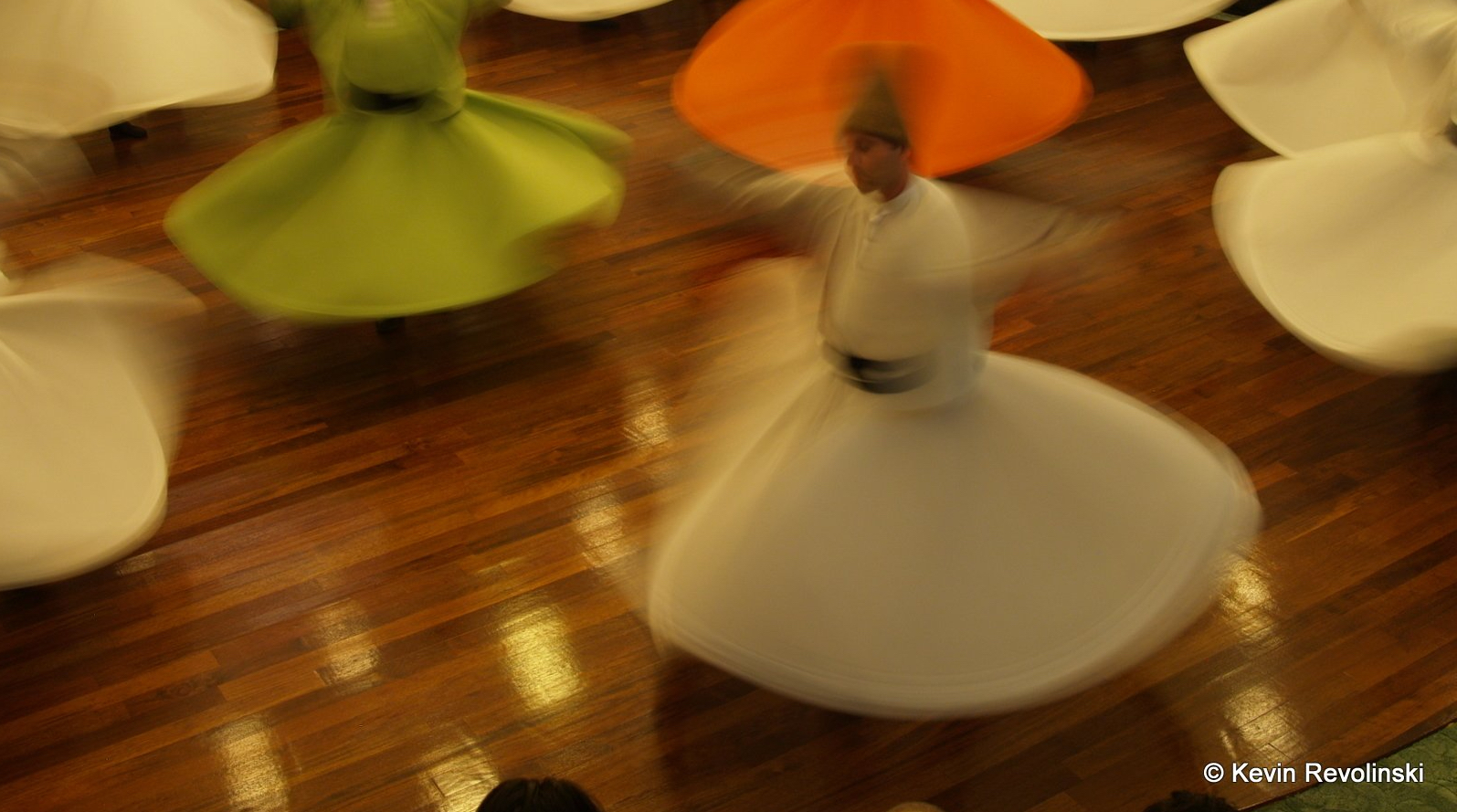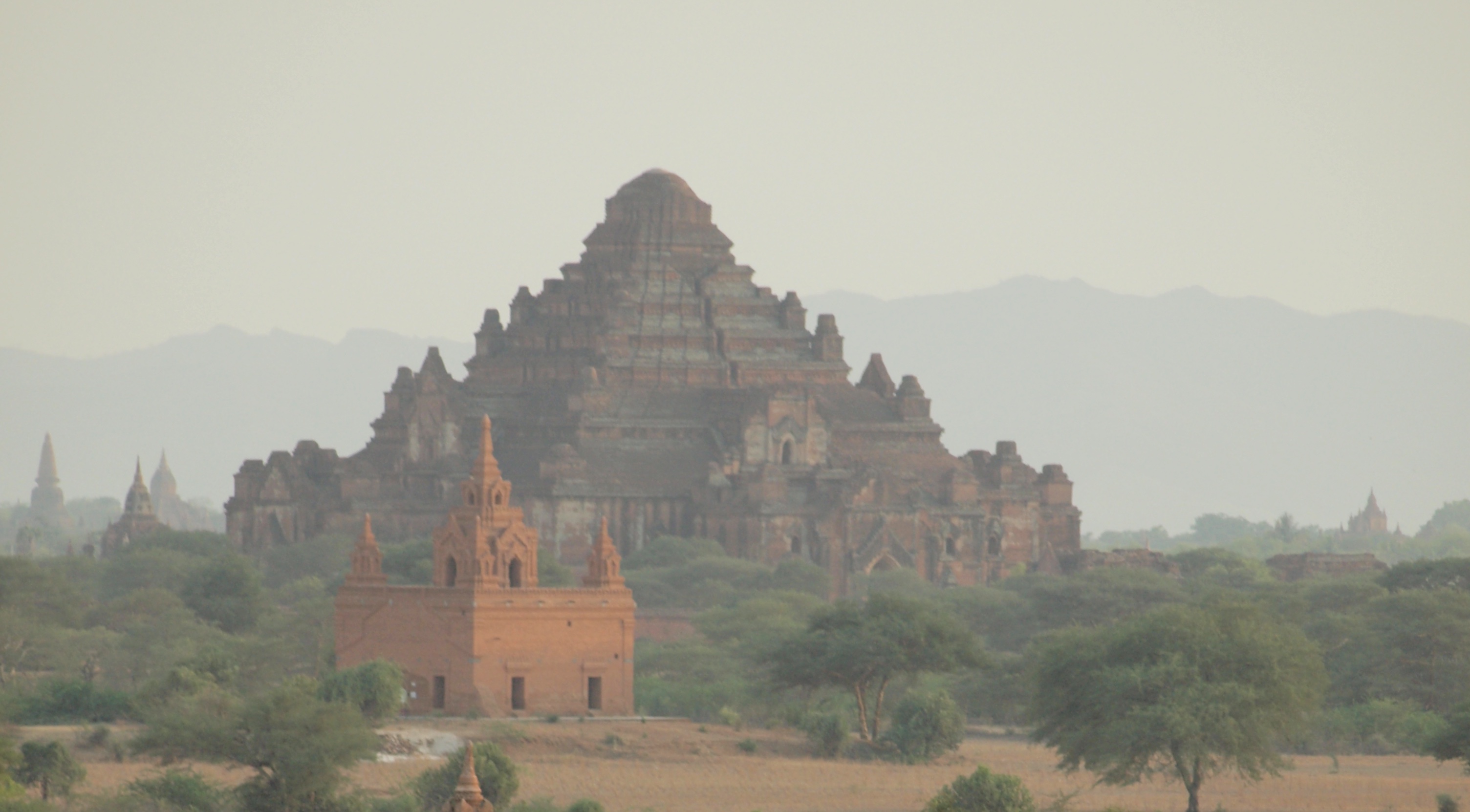Towering proudly over the Quetzaltenango basin in the highlands of Guatemala is nature’s perfect cone. Santa Maria, a now dormant volcano—one of thirty volcanoes in this country—can be seen from great distances in any direction, thrusting 12,375 feet into the clouds. Anything this prominent, this beautiful, simply demands to be climbed.
In fact, Santa Maria is only one of many popular hikes in the highlands. The breathtaking colors and dramatic landscape are perhaps only matched by the rainbow-colors of the brightly painted buses and the clothing of the Maya themselves. The Mayan culture prevails in the highlands, and it is no surprise that their cosmology is rooted in the power of nature.
In the villages, you can still hear the throaty rasp of the glottal stops of the K’iche’ language. Go roughly one mountain in the other direction and you can hear the Mam tongue. In all, there are 20 Mayan languages still being spoken in Guatemala alone. Quetzaltenango itself, in fact, is more popularly known by all Guatemalans by its Mayan name, Xela (SHAY-la). It is a popular destination for studying Spanish in Guatemala.
From Xela, Santa Maria is a short ride down a road that might be mistaken for a dried-up riverbed if one didn’t know better. I signed on with a group of nine people at a local adventure tour outfit. For $25, you receive a guide, a packed breakfast, and a pat on the back if you make it.

Four-thirty a.m. came painfully after a night of too much salsa, merengue, and Gallo, the national beer. I threw on my jacket and packed a couple of liters of water and headed down to the designated meeting spot in Parque Central to wait for the mini-bus. Surprisingly, even before five, the park is full of activity. A hot dog vendor spends the entire night down there on a street corner, and several Maya women huddle around simple grills and burn firewood to cook some of the local corn tortilla-based meals. Though Central America is typically thought of as a place to escape the cold, at 7,660 feet, Xela is not exactly a balmy beach environment.
The minivan, it turns out, had broken down. A man showed up in a small rattling SUV, and a taxi followed. The driver was the owner of Adrenalina Tours, Patrick Vercoutere. Born in Belgium, he spent 15 years living in Columbia working with street children before he moved to Quetzaltenango in the late 90s. There, he opened an Italian restaurant and Adrenalina Tours on the side. He loaded us in and we were headed down the rough road leading to the volcano, which was still hidden in the lingering night.
Police escorts had been promised. Four to be exact. Two men in blue uniforms and combat boots showed up, their firearms only evident upon close inspection. The actual incidence of volcano robberies is difficult to pin down. While some play it up, the tourist industry perhaps plays it down. The truth lies somewhere in the middle, but its existence is undeniable. To combat the problem, most tours boast police escorts, several armed guards who will deter the rag-tag thieves.
As he unloaded our breakfast at the foot of the volcano, Patrick told us that the “thieves” are just local poor people struggling to get by in a country where unemployment is reportedly as high as 70%. “Only one of the guns is real. The rest are all plastic. Trouble is, which one?” But he told us not to worry. “They stay here and they look with—what do you call those things in English, binoculars?—and when they see the police they don’t bother coming out.” Then he gave a mischievous grin, looked around almost conspiratorially, and told us, “We tried it a few times without the police escort. Just to see. Nothing happened.” He chuckled and shrugged. “So with the police, you don’t worry.”

Santa Maria’s tree-covered slopes are richly green, like much of highland Guatemala. In October when I hiked it, wild flowers were in bloom. Venus, a sacred element in the Maya cosmology—the bringer of the day—rose just above the neighboring mountain with the unwavering clarity of high altitude.
Our guide was Marcelo, a young carpenter’s apprentice who gets his tuition money—and his exercise, no doubt—on the weekends. The air is thin, and, for the uninitiated, this makes the seemingly easy initial ascent a little rough on the lungs. The climb begins modestly up wide paths, past sloping cornfields and onion patches. Corn is the staple crop. The variety that grows here sometimes towers to twice a man’s height. It holds religious significance for the Maya residents as well. The first beings were made of corn, and it is corn that has sustained them.
As my tour group began our ascent for pleasure, the locals were beginning their arduous daily hikes to work the fields that often grow out of impossible slopes. We passed a man hunched down like a human ant, carrying a load that just seemed far too large for him. A strap from the large fabric bag was wrapped tightly around his forehead, and he leaned into the weight as well as the incline. The voice from a radio, buried deep in his burden, sounded like an invisible companion that lurked somewhere in the air beside him. He greeted us heartily and asked us where we were all from before turning toward another path between the rustling leaves of corn stalks.
Within an hour we reached La Mesita, a small, level plot of land amidst tall grass with rocks that made good perches for a break. From there, the climb became much more demanding. This was only the beginning; we knew we had at least two and a half hours left. We traded the open spaces and the view of the sweeping valley for a narrow, muddy and rock-strewn trail that angled up sharply and brought the burn to my leg muscles.
The police fell far enough behind that any thieves could have cleaned out every one of our hidden pockets, tried on our shoes to see which hiking boots fit best, and still had time to sit and eat our lunches. Marcelo cupped his hands together and blew a low whistle like that of a mourning dove. There was no response, but, after a well-needed break, one of them appeared at one of the trail bends below. The other had given up.
The mud made passing difficult, and occasional dead trees fallen across the trail offered valuable handholds. The effort raised the blood quickly, and all excessive clothing that had been needed for the wait in the park was sent to backpacks. The trouble was that during the breaks, one soon became very chilled by the now soaked-with-sweat backpack. I wasn’t inclined to breaks that lasted any longer than it took to catch my breath.

The thick clouds slid in like foamy waves breaking over the neighboring peaks and left us dismayed that we would not have the much-touted view of the 60-mile distant Pacific coast when we finally reached the summit. But the world became mythological as the mists obscured the imprint of Xela across the plain. Sound was muted, the trees blurred and disappeared until the world was only primordial mud and stones, and the immediate tree branches reached out and touched us as we passed.
And then the world was recreated. The air itself began to glow around us, as though Venus had finally, in fact, brought the day. Above us, the mists began to thin, visibly slipping like fleeing ghosts around the tree trunks, through the flowers, sliding along boulders and outcroppings. Shafts of light fell on us, and the verdant skin of the volcano was revealed in all its rich glory as patches opened up in the fog.
Finally, the edge of the tree line became evident, and we were told this was the end. One wanted to run the last stretch, wide open to the world, basking in the sun above the pure, voluminous clouds that shined as brightly as the hard blue of the heavens. But it was enough work just to trudge the final meters exhaustedly.
When I finally breached the summit and could see in all directions, high above all of Guatemala, I found…cow pies? A lifetime in Wisconsin makes one an expert in such matters. Despite the illogic of it all, there they were. “Vacas? Cows?” I asked Marcelo incredulously. “Sí.” “¡Absurdo!” Marcelo only shrugged and smiled.
Under a ledge, toward the west, we found an arrangement of monjas blancas, white nun orchids. The rock surface above was thickly stained by the black smoke of copal incense. Mountains are power centers for the Maya, and are often the sites of Maya ceremonies. In fact, the temples such as those of Tikal, Copán, and Chichén Itzá were considered sacred mountains in cities, laid out to symbolically recreate the land that was—and still is—so sacred to them.
On the opposite slope of Santa Maria, at 2,500 meters, is another volcano, Santiaguito, active and, perhaps, taking some of the pressure off any immediate future performances from Maria herself. The valley below is filled with the dried rivers of mud and sand from recent efforts. While Santa Maria has slept since 1900, Santiaguito removed the pueblo Palmar from the map in 1991. Also, a scientific expedition of four people was lost to deadly gases that same year. Today, Santiaguito is still counted as one of the most active volcanoes in the world, regularly spouting steam and smoke, noxious gases, and occasional mudslides. Though we were told one can hear the occasional rumble, we only looked out over a white cloud and heard the heavy sweep of the wind.
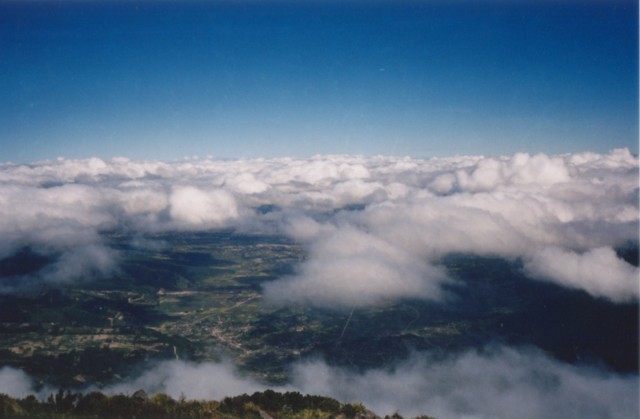
We finished off our sandwiches from the packed breakfast and lay across the massive rocks, basking like the flourishing population of tiny lizards there. The ascent had taken three and a half hours, and the trip down, we were told, was only one and a half. But the descent is often harder. The muscles used are different, and one is already approaching exhaustion. The only thing to look forward to is being done. Sometimes that’s enough.
When we finally reached La Mesita, we knew the hardest part was over. I slumped against a rock to finish off my water, and another group of hikers was just coming up the slope. The man in the lead carried a long black umbrella, and I paused mid-drink and started to chuckle. One of my fellow hikers shot me a complicit look and chuckled. “Did you think it was a gun at first glance too?” At that point I was too tired to have even cared. Want my wallet? Sure. Can you get it out for me?
Along the last portion, where the trail widened to grassy stretches strewn with large rocks, I gave up resisting and just ran pell-mell down the hill, letting gravity do the work for me, and only steering around rocks. I reached the road ahead of the others and spent some time listening to the birds and the gentle rustle of the leaves and the cornstalks.
As we returned to Xela, I looked back to where Santa Maria had emerged from her crown of clouds and I could see why the Maya consider it sacred.
When You Go
Bandits on these hikes remain a potential danger more likely than volcanic activity. Patrick Vercoutere and other tour operators are working with tourist police to address the matter, but the crimes can still be expected. “People in the field are earning four, maybe five US dollars for a full day, from sunrise to sunset.” They always notify the police when they go hiking, but, due to staff shortage, they are not always present.
For Vercoutere, a viable solution is to make Santa Maria a national park. Plus, until locals are involved, the volcano and its beauty only benefits a few private businesses.
Tours include a guide and (theoretically) police protection. $25 per person.
About the Author
Check out Kevin Revolinski’s contributor page for more of his exciting travel stories. Follow Kevin Revolinski’s travels on his travel-planning website, The Mad Traveler, featuring many of his articles, photographs, information about his published travel guides, and more.




